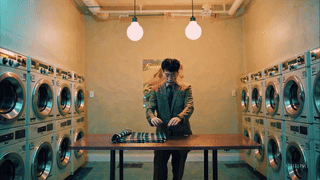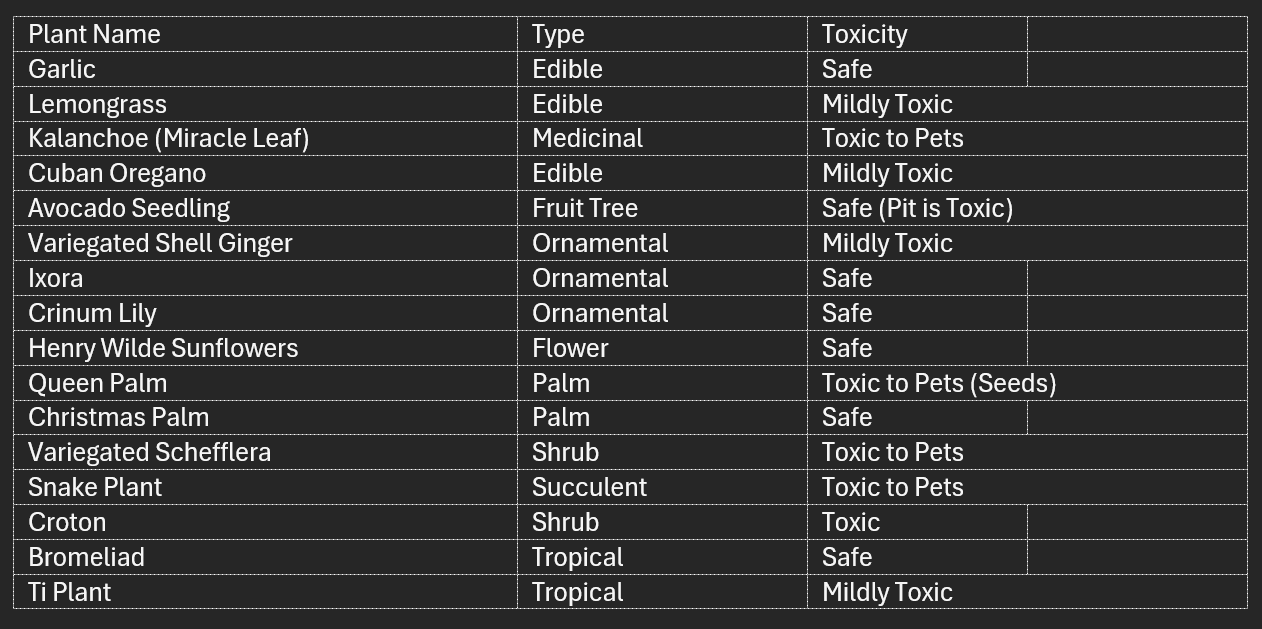Experiments with AI: Jack Nicholson and Burning Semicolons
Testing the limits of ChatGPT and Sora
Many crescent moons ago, back in 2023, I was finishing my first book: Walker Percy and the Crisis of Meaning. It took me dozens of hours to write this thing. It really began as my dissertation and then gradually morphed into a scholarly monograph. Near the end, I almost hated it. I say “almost” because I was really proud of it in many ways, but I was doing lots and lots of minute technical things that nobody really notices unless you get them wrong, like formatting the manuscript, checking for issues with citations, etc.
As I was nearing the finish line, I was thinking about the epigraphs that I’d include in the very front of the book. The epigraph is that little quote that allows you to kind of show off how smart you are right on the very first few pages of the book. Every epigraph actually just says, “Look how witty and smart I am!” I thought to myself, I know what I’m going to use for my epigraph. There’s a Marshall McLuhan quote I’ll use. I know it is right. I know it is perfect. I know it exists. I just need to find it.
When you spend years tracking citations and quotations, you get a sense of which quotes exist in which books. But for whatever reason, this particular quote was eluding me. I couldn’t find it.
So, I asked ChatGPT, “Where does McLuhan describe the relationship between the Trinity and formal causality?” ChatGPT spit out a beautiful quote that made me croon like Frank Sinatra: “Yes, that’s it, baby!” That was the quote I was going to open my book with, the book that I’d labored so hard over, since it encapsulated everything that I’d been writing and thinking about. I can’t remember the quote precisely, but I knew it was the one.
And then I asked: “Where does McLuhan say this?” It coughed out: “On page 86 of Laws of Media.” I had Laws of Media on my bookshelf, so I pulled it out and flipped to page 86.
To my disappointment, it wasn’t there.
I told ChatGPT that it wasn’t in the book. I asked where it was actually. It apologized and told me it’d made it up. I couldn’t find it anywhere, even if I wanted to. It didn’t exist.
Now, imagine. I spend years working on the guts of this book. Blood, sweat, and tears on this thing that perhaps 10 or 15 people (if I’m lucky) will read. I’m trying to establish a reputation as a scholar. I’m trying to “get published,” which is essentially the equivalent of trying to give birth to yourself, no easy task. And then, I find a publisher (after prepping a proposal), wait for peer reviews, read through peer reviews, agonize over edits/making them happy, add two brand spanking new chapters, apply for a grant to pay for people to help edit the book, win the grant, coordinate with others on how to edit the book, and then… and then… right at the end, when the baby’s head is crowning, I INSERT ON PAGE ZERO A FABRICATED QUOTATION MADE UP BY A MACHINE.
I open with this anecdote because it demonstrates a major issue in ChatGPT output. When discussing AI with students, I frequently give them this example to highlight the drawbacks of AI when writing (and when trying to hunt down quotations, in particular).
And yet, I don’t want to badmouth AI in this short little article. Lots of people trash AI without ever really playing with it. They’re cutting their lawns with scythes, and they look over at their neighbor with the lawnmower and scoff: “Not me! I’d never use it.” And yet, there was probably a day when the scythe was the lawnmower, and people didn’t really care about or have lawns, either.
No, I’m not out here to trash my “good little bureaucrat” (a fun epithet I heard someone give to AI recently). I only want to acknowledge some of AI’s flaws in order to expand on some things that I think AI does particularly well. The goal when it comes to thinking about changes in technology is to do your best (hard as it may be) to avoid any sort of kneejerk “this is good, the savior of humanity, etc.” or “we’re all gonna die” kind of thinking.
Todays’ post is about how I spent my spring break trying to figure out ways to integrate AI into what I needed to do. Before I do that, though, allow me to wax nostalgic for a moment.
Fanny Packs, Phonebooks, and THE WEB
Here I am in the early 1990s. I’m four or five. I don’t know Bill Clinton is the President, but there he is, doing his Bill Clinton thing. My parents wear fanny packs. I probably have a little one just for me. I have Nerf guns and play laser tag. I have a gigantic desktop in the kitchen and a phone that sits on a cradle. The phone plugs into the wall, too. We have a number for the house (and not just for the individuals within it).
On occasion, I pick up the phone and hear the dial-up doing its thing: WAAAAAAAA WEEEE WAAAAAAA URRRRRRRRRR EHHHHHHHHH.
You know what I mean if you know what dial up is.
If you don’t know what dial up is, go look up what dial up sounds like.
Anyway, imagine you, too, are living in the early days of the Internet. Everyone still uses phonebooks. You have an aunt who is a phone book saleswoman. She makes good money. People need phonebooks, you know. Phonebooks seem like an anachronism today (in fact, I’m sure many people would be alarmed by the prospect of their home address, full name, and phone number being listed there for everyone to see). But they weren’t an anachronism in the early 90s. They were essential.
Your aunt (we’ll call her Penny) thinks the Internet is kind of cool. Penny’s been in the phonebook business so long that she can’t imagine anything displacing it. Penny refuses to experiment with or use the Internet. Well, to be fair, she’s been to Hamster Dance. It makes her chuckle, but she can’t really see the point of the Internet.
Hamster Dance is all she knows. Penny is going to lose her job.
You know it, but she doesn’t. It’s just a matter of time. Pretend you can go back in time. What would you tell Penny to try to convince her to at least just use the dang thing to see what it is like?
Would you grab her by the temples? Shake her permed little head? Try to talk some sense into her?
We’re in the early days of the Internet again. Or at least that’s what it feels like to me. Think of ChatGPT as a sort of AOL or Yahoo in the early days. Kind of makes you feel warm and fuzzy, doesn’t it? I was just a wee little lad when HTML was really beginning to take off. We don’t really know which direction AI will spread out or grow into. We didn’t know everything about where HTML would go, either.
But we had the germ of the idea, the incipient grammar of HTML, and if we would’ve taken the time to experiment a little bit, we would’ve been more adept at trying to discern the implications of the Internet on various facets of everyday life.
We could’ve saved Penny some pennies. But enough about Penny and her pennies and her perm.
Let me tell you about Jack Nicholson’s garden.
Jack Nicholson’s Garden
Living in a tropical climate, I have lots of strange things in my yard that may or may not kill me. I have no idea what their names are, and thus I don’t know if they’ll kill me. If I knew their names, I might have a better idea if they’d kill me. But sometimes I worry they’ll kill me.
When I first came to Florida, I realized that even the trees point their sharp, spikey branches at cars as they drive by. They’re like daggers hung in midair, menacing drivers.
In a climate like this, it would be helpful to have someone distinguish a manchineel from a kumquat. Enter Jack Nicholson, my new gardener.
Here’s my AI prompt: “Pretend you're a genius in horticulture. Speak like Jack Nicholson.”
Don’t ask me why I wanted Jack Nicholson as my gardener. I was just sick and tired of looking at bland output that carefully told me about my shrubs and lethal flowers. I wanted a gardener with an edge. If we’re talking about edgy things, I want to hear from an edgy person.
It begins: “Alright, kid, listen up. You’ve got a patch of land in Southwest Florida that gets roasted like a Thanksgiving turkey. You need plants that don’t just survive the sun—they own it. …”
After spending a decent amount of time walking the property, asking Jack for advice, sharing photos of plants, etc., I ended up with the following table of what’s in my yard:
Occasionally, ChatGPT would lose its Jack Nicholson-ness, but I didn’t really mind. It had all sorts of interesting insights on how to take care of these things, what to avoid, etc. I would occasionally verify the output by searching online. But, yes, I’d say, that is a croton, and it can be dangerous, as per not only ChatGPT but X, Y, and Z source online.
How else has ChatGPT proven itself to be a good little bureaucrat?
I’m trying to rearrange my garage and get a lifting rack in there (cue the midlife crisis). I gave it a bunch of different gym equipment and said: Give me various configurations that will work for X, Y, and Z budgets. I was very impressed with its ability to give me menu items to choose from.
I regularly plug in YT videos into a YouTube Summarizer GPT. Transcripts need to be enabled on the video for YT to read it, but this saves a great deal of time.
Formatting. When I peruse a scholarly article in PDF form, sometimes I want to copy/paste block quotes, but somehow all these linebreaks get inserted when pasting the quote into Word. I just tell ChatGPT: Remove the linebreaks for this quote and all that follow, and it makes it much easier than removing the linebreaks one by one.
AI Sewage
ChatGPT is comically bad at certain things. Laughably bad. Here are some fun examples of things I’ve experimented with:
I have a friend who hates semicolons. He’s a very smart man; however, he lacks brain cells in the area of the brain responsible for good grammar. Anyway, I asked ChatGPT to make a gigantic flaming semicolon that I could provoke him with. It came up with the images immediately below. I kept trying to force it out of giving me “S” shapes and reverse “S” shapes and actual semicolons with weird additional artifacts included. It had no problem making a semicolon out of a cloud. Anyway, I think I just gave up.





I asked ChatGPT to superimpose a weight rack on my garage wall to give me a sense of what the space could look like. I can’t find the image ChatGPT generated. But basically, the picture consisted of three solid black rectangles superimposed on my original image. It looked like ChatGPT used MS Paint to draw it.
Sora. Sora is so comically bad/insanely frustrating to use and cool at the same time. Before you can even operate it, you have to agree to not upload stuff you don’t have the rights to. And you can’t use the tool to make inappropriate/obscene things. They threaten you with a ban, and I appreciate that. Anyway, I prompted Sora with “A banana exploding in slow motion.” It gave me the first video below. I’ll let you decide if you think it did a good job with my prompt. I thought I wasn’t clear enough, maybe, so I re-prompted with “Show me a bullet going from the top of a banana to the very end of the banana in slow motion.” It gave me the second video below, a half-peeled banana falling on top of another banana and the two getting poked with the end of a rifle. Just what I was going for!
Where to From Here?
In the main, this article simply sought to give you some sense of my adventures and experiments with AI as of recent. This article provokes larger questions:
Will AI be incapable of what Cal Newport calls “deep work”?
Will AI help us to “drain the shallows” (again, I’m nodding to Newport and Nicholas Carr here)?
Is it possible to utilize with AI without it infecting your perception, relationships, family life, culture, institutions, etc.? I don’t think so, of course.
So, I guess the real question is whether you’re going to invite Jack Nicholson to help you garden or whether you’ll use Sora to make bananas explode. I’m not sure if you will. Honestly, now that I’ve done it, I’m not sure if I will, either.








